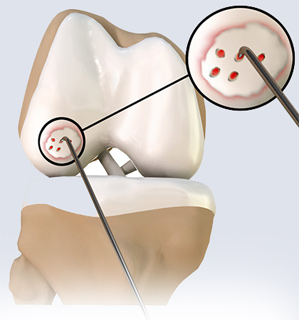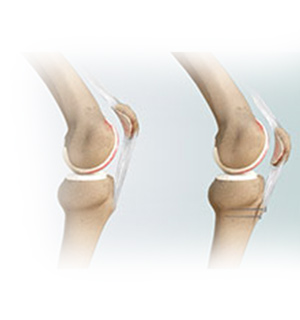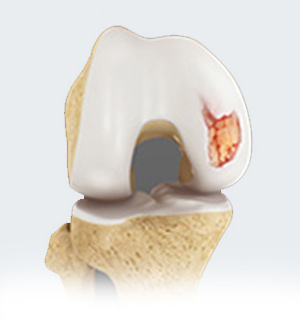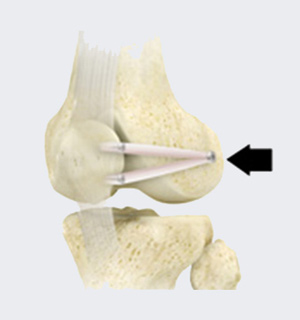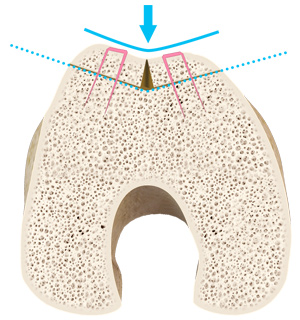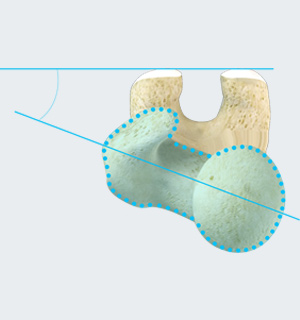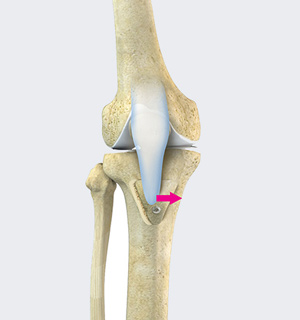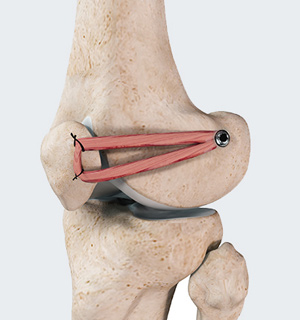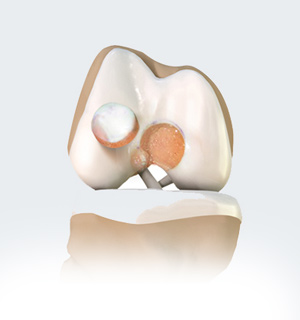Dr. Adam Yanke is a sports medicine orthopedic surgeon with a special interest in advanced arthroscopy, shoulder replacement, and a special focus on patellofemoral dysfunction and cartilage restoration.
Dr. Monica Kogan is a pediatric orthopedic surgeon specializing in the treatment of broken bones, birth defects, trauma, neurologic dysfunction, scoliosis, and walking disorders.
Click on the below mentioned tabs to know more about their services.
-
Chondroplasty is a surgical procedure to repair and reshape damaged cartilage in a joint. The procedure involves smoothing degenerative cartilage and trimming any unstable flaps of cartilage.
-
Distal realignment procedures, also known as tibial tubercle transfer (TTT) procedures, are performed to reposition the kneecap after subluxation or dislocation by realigning the tendon under the kneecap to the underlying tibial tubercle.
-
Cartilage replacement is a surgical procedure performed to replace the worn-out cartilage with new cartilage.
Articular or hyaline cartilage is the tissue that covers bone surface of the knee which helps in smooth interaction between the two bones in the knee joint.
-
Medial patellofemoral ligament reconstruction is a surgical procedure indicated for severe patellar instability. The medial patellofemoral ligament is a major ligament that stabilizes the patella and helps in preventing patellar subluxation (partial dislocation) or dislocation. It can rupture or get damaged when there is patellar lateral dislocation.
-
LPFL reconstruction or lateral patellofemoral ligament reconstruction is a surgical procedure employed to treat patients with severe patellofemoral instability. The procedure involves replacing a torn lateral patellofemoral ligament with a part of a tendon taken from your leg. The main objective of the LPFL reconstruction is to tighten the knee joint and restore its stability.
-
Trochleoplasty may be performed as an open surgery or arthroscopically, a minimally invasive procedure that uses a narrow lighted tube with a camera to provide a clear view of the operating site. Trochleoplasty involves either lengthening the walls of the trochlear groove or deepening the groove by removing bone or any abnormal bony growths.
-
Tibial derotational osteotomy is a surgical procedure employed to treat rotational deformities of the tibia, such as tibial torsion. This is a condition characterized by twisting of the tibial bone of the lower leg, causing malalignment of the knee and ankle with an appearance of an inward or outward turning of the feet.
-
Tibial tubercle osteotomy is a surgical procedure that is performed along with other procedures to treat patellar instability, patellofemoral pain, and osteoarthritis. The tibial tubercle transfer technique involves realignment of the tibial tubercle (a bump in the front of the shinbone) such that the kneecap (patella) traverses in the center of the femoral groove.
-
Traditionally, arthritis in only one compartment of the knee is treated by partial knee replacement surgery. Patellofemoral knee replacement is a minimally invasive surgical option performed in the patellofemoral compartment only, preserving the knee parts not damaged by arthritis as well as the stabilizing anterior and posterior cruciate ligaments (ACL and PCL).
-
Articular Cartilage is the white tissue lining the end of bones where these bones connect to form joints. Cartilage acts as cushioning material and helps in smooth gliding of bones during movement. An injury to the joint may damage this cartilage which cannot repair on its own. Cartilage can be damaged with increasing age, normal wear and tear, or trauma. Damaged cartilage cannot cushion the joints during movement and the joints may rub over each other causing severe pain and inflammation.
If you wish to be advised on the most appropriate treatment, please call to schedule an appointment or click to request an appointment online.


